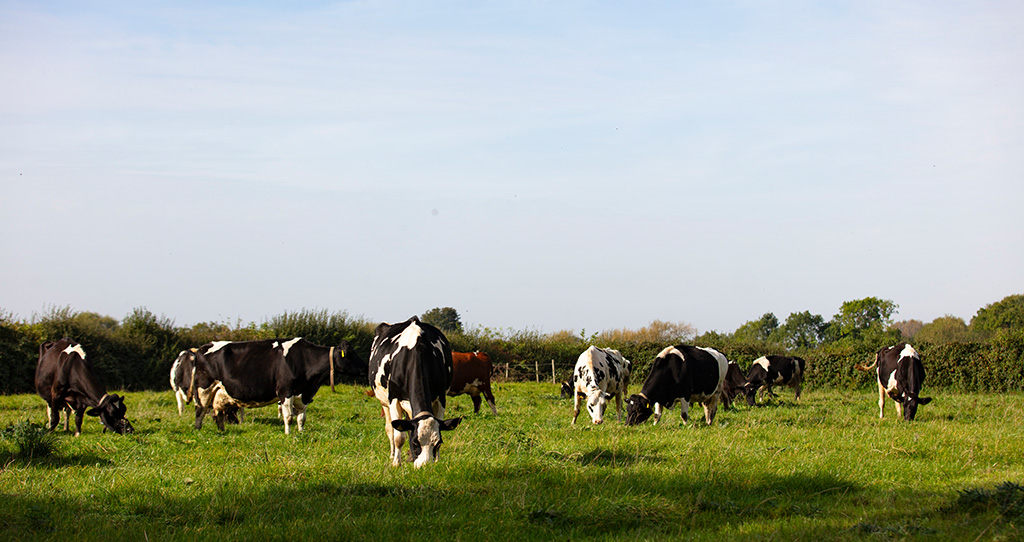Cattle infection in the wider environment

Cattle can be infected with the bacteria M.Bovis (Mycobacterium Bovis) via many risk pathways, both directly and indirectly.
The primary route is inhalation of infected particles, with cattle breathing in the bacteria from the air.
Determining the bTB risk factors for each farming business is complex and multiple variable risk factors are considered.
Cattle are continuously tested for bTB. In England, protocols are based on TB risk areas to minimise the spread of disease through cattle movements and within herds.
Infection may occur by cows eating or drinking from contaminated material.
Clinical sampling of live badgers has shown that bTB bacteria can be isolated from sputum, faeces, urine, bite wounds and draining abscesses. Badger latrine sites, where badgers urinate or defecate in fields to mark their territory, can contaminate grass with bacteria, which can then be transmitted to the cows when they graze.
If a badger has a TB infection in its kidneys, it will excrete extremely high levels of TB bacteria on to the grass. If an infected badger eats or drinks from cattle feed or water troughs, they can spread TB bacteria through their saliva, which infects the cows when they eat or drink from these contaminated sources.
The multiple methods of transmission between badgers and cattle, are discussed in the bTB transmission scientific review paper.
Survival of M. Bovis in the environment
Once in the environment, M.Bovis survives for longer periods in cool, moist, damp, and darkened conditions. M.Bovis can be inactivated within hours by UV (ultraviolet) sunlight rays but in winter months it may take several weeks.
The drying effect from sunlight and heat will also occur on exposed hard surfaces and the risk is reduced further by cleaning and disinfecting.
Studies have shown that M.Bovis can survive:
- In water up to 60 days subject to the conditions.
- In soil up to two weeks in summer and three months in winter.
- Up to 28 days in silage, the process of ensiling reducing access to oxygen.
- In summer for a few days in hay and maize, up to three months in winter.
The M.Bovis bacteria has developed survival mechanisms against harsh conditions but remains ineffective in this quiescent state. Identified as a potential risk, evidence that it is a major factor is lacking epidemiology.
PCR testing can be used on environmental samples such as slurry, faeces, soil, and water as an indicator to the sources of infection to inform bio-security management. The PCR test performance for environmental sampling is unvalidated by the APHA and is only considered for authorised use on a private basis in specific circumstances.
However, diagnostic testing is not a perfect tool, and false positives occur especially in larger samples.
During field trials at Woodchester Park 83% of known infected groups were identified.